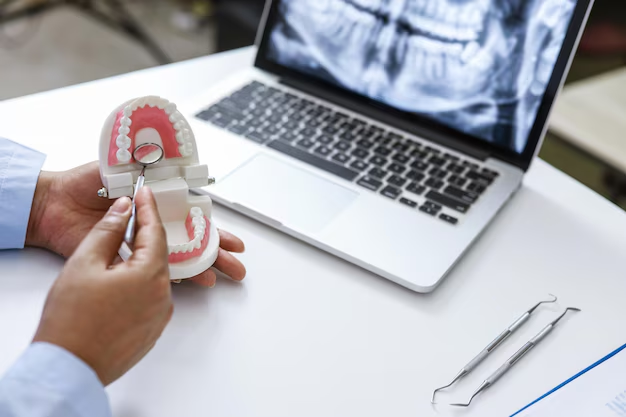Navigating the Journey to False Teeth: A Comprehensive Guide
Losing a natural tooth or deciding to transition to dentures is a significant milestone for anyone. Whether it's due to aging, tooth decay, or an accident, the path to obtaining false teeth, commonly known as dentures, is a process filled with decisions and adjustments. Understanding how to get false teeth and what the journey entails can help alleviate concerns and lead to a more confident smile.
Understanding Dentures: What Are They?
Types of Dentures
Dentures have evolved significantly over the years, offering a range of options to suit different needs:
Complete Dentures: These are full dentures that replace all teeth in either the upper or lower jaw. They generally rest on the gums and are removable.
Partial Dentures: Ideal for those missing some teeth but not all. These dentures fill in the gaps and are often held in place by remaining natural teeth or precision attachments.
Implant-Supported Dentures: These dentures are anchored with dental implants, which provide more stability compared to conventional dentures.
Immediate Dentures: These are temporary dentures placed right after tooth extraction, allowing people to avoid the embarrassment of having no teeth while their permanent dentures are being made.
Materials Used
Dentures today are made from a variety of materials, each offering unique benefits. Acrylic resin, porcelain, and partial metal frameworks are popular choices, with the selection often dependent on individual needs, budget, and aesthetic preferences.
How Are Dentures Made?
Understanding how dentures are crafted can help demystify the process and prepare individuals for what to expect.
Initial Consultation
The journey begins with a consultation with a dentist or a prosthodontist, who specializes in denture creation and fitting. This initial meeting aims to assess the oral health of the patient, discuss options, and create a treatment plan tailored to their needs.
Impressions and Measurements
Accurate dental impressions and measurements are critical for fabricating well-fitting dentures. This typically involves creating a mold of the patient’s mouth using a special dental impression material.
Wax Trial
A wax trial is often conducted to ensure the fit, alignment, and bite are correct before the final set of dentures is created. This step allows for adjustments and ensures patient comfort and satisfaction.
Final Fit
Once the dentures are crafted, the final fitting occurs, and any necessary adjustments are made to ensure functionality and comfort. Follow-up appointments may be required to make further refinements.
The Financial Side: What to Expect
Cost Considerations
The cost of dentures can vary widely depending on the type, material, and region. While dental insurance plans might cover some costs, it’s important to check for specific coverage with your provider.
Payment Plans and Financial Assistance
To make dentures more affordable, some dental practices offer payment plans, or sliding scale fees, based on income. Additionally, some communities provide assistance programs for essential dental procedures.
Preparing for Dentures: Steps to Take
Psychological Preparation
Embarking on the transition to dentures involves more than just the physical aspects. Adjusting to the idea of wearing artificial teeth requires psychological preparation. Many find discussing feelings and concerns with their dentist or joining a support group beneficial.
Dietary Adjustments
Before getting dentures, transitioning to a temporary soft diet can be helpful. Understanding how dentures will change eating habits allows individuals to prepare for a more seamless adjustment.
Life with Dentures: What to Expect
Initial Adjustments
Adjusting to dentures can take some time. Slight discomfort, changes in speech, and increased saliva production are normal early on but typically decrease as adjustment occurs over a few weeks.
Care and Maintenance
Proper care of dentures is essential for longevity and oral hygiene. Regular cleaning with a soft-bristled brush and non-abrasive denture cleaner prevents plaque buildup and keeps dentures looking their best.
Follow-Up Appointments
Regular dental check-ups remain crucial even after getting dentures. These appointments ensure denture stability and monitor oral health, allowing for timely adjustments and to address any emerging issues.
Common Challenges and Solutions
Overcoming Speech Difficulties
Speech can initially feel awkward with new dentures, often requiring practice and patience. Reading aloud and repeating challenging words can facilitate a smoother adjustment.
Tackling Discomfort
If discomfort persists beyond the initial adjustment period, consult your dentist, who can make necessary modifications. Using denture adhesives can also help improve fit and comfort in some cases.
Eating With Confidence
Initially, cutting food into smaller pieces and chewing slowly helps when adjusting to dentures. Over time, chewing and biting strength will improve, helping restore more typical eating patterns.
Summary: Essential Steps to Obtaining False Teeth 🦷
- Understand Your Options: Research the types of dentures available and decide which best aligns with your needs.
- Consult a Professional: Schedule an appointment with a specialized dentist or prosthodontist to explore suitable choices.
- Budget Accordingly: Be aware of costs involved, check for insurance coverage, and inquire about payment options.
- Prepare: Physically and psychologically prepare for the transition by entering a supportive network.
- Adjust and Maintain: Give your body time to adapt to dentures, and keep a regular care routine to ensure longevity.
Opt for quality consultations and care to ensure the journey to dentures is as smooth as possible. With time and proper guidance, transitioning to false teeth can be a positive change that restores not just your smile but also your confidence.

Related Topics
- a Bridge For Teeth
- a Denture Plan That You Can Pay Monthly Payments
- Are Dentures Covered By Insurance
- Are Dentures Covered By Medicare
- Are Dentures Uncomfortable
- Are Permanent Dentures Thinner Than Temporary Dentures
- Are Snap-in Dentures Covered By Insurance
- Are There Plastic Dental Partials With Metal
- Can a Tooth Be Added To a Valplast Denture
- Can Dogs Get Dentures